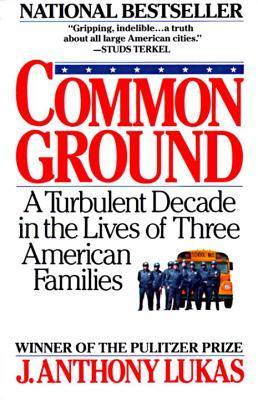What do you think?
Rate this book


688 pages, Paperback
First published August 12, 1985
Sometimes the fear of blacks cost the communities improvements they would otherwise have welcomed. When the Mayor insisted that a proposed new municipal swimming pool in Dorchester must be open to all races, the residents refused to accept it, claiming that it would become an “inkwell.”This exhaustively researched tour de force and 1986 winner of the Pulitzer Prize for General Nonfiction is a social history of Boston in the 20th century, particularly of the desegregation busing efforts and backlash in the 1970s and 80s. A fascinating snapshot of a broken system, it covers gentrification, white flight, elite privilege, white saviorism, racism, class animosity, political and religious power, corruption, and the limits of the democratic process. Written with a truly epic scope, it���s a dispiriting account of good intentions gone awry.
She knew full well which whites would pay the price for all of this. It wouldn’t be those who worked in the big corporate and law offices downtown, the ones who dined in those Back Bay clubs and lived in the comfortable, all-white suburbs. No, as usual it would be the working-class whites…The book follows three families:
But that was what liberals were like, she had come to understand; it was easy to be a liberal about other people’s problems. Maybe that was why all the problems were in the city and all the liberals in the suburbs.These portraits are characterized by enormous empathy and balance, masterfully contextualizing the seeming paradox of a northern city’s struggles with racial tension.
Alice grew progressively angrier at the power, wealth, and privilege arrayed against her. An unelected judge, an unresponsive senator, and uncaring suburban liberals had joined hands to wrest from her the one thing in the world over which she still exercised some control: her family.As good as it was, the book’s mind-bogglingly encyclopedic backstories were wearying at times and its portrayal of what an uphill battle racial issues are felt hopeless. I also would have preferred a different black family to be profiled, one more politically empowered and more in step with the movement for claiming their rights (not just one hoping to improve their economic lot), as I think this would have generated more sympathy and understanding for the pro-busing cause and its long-term goals in the face of unmitigated failure in the short term.